Four years ago, when I surveyed the original Peter Arno artwork that came from the estate of New Yorker cartoonist Frank Modell, I was unable to say much about one of the gag cartoons because it came to the market lacking its caption:
Recently I came across Arno's cartoon of April 30, 1932 on the blog A New Yorker State of Mind and then everything fell into place. Modell evidently had been holding on to preliminary art for a New Yorker gag that Arno totally reworked before publication:
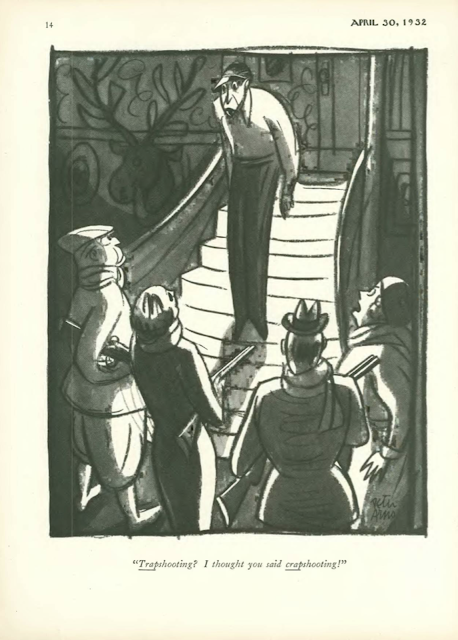 |
| "Trapshooting? I thought you said crapshooting!" Peter Arno The New Yorker, April 30, 1932, page 14 |
I doubt we'll learn whether Modell himself knew exactly what he had here, or for that matter whether he knew the intended caption. The composition of the preliminary art has much going for it, particularly that the shooting party is seen head on, and not from the rear. Yet Arno felt compelled to rework the entire composition. Why expend so much effort on this "turnaround," as his biographer Michael Maslin called it when I brought these drawings to his attention? Is this sort of wordplay worth all the effort?
I'm not sure I have the answer. The preliminary art definitely shows the driver nervously realizing his error when the entire party is just heading out, while the published version stages the critical moment when the shooters are—possibly—in the act of arriving at some gambling venue. The suggestion that they may be about to enter the wrong place might give the driver's mistake more immediacy and make it funnier, whatever one's opinion of this brand of wordplay. But is that truly all that's going on? In the finished art, Arno has also softened the exaggerated, cartoonish reaction of the driver into something slightly more understated.
All cartoonists, of course, are obliged to make some changes to their compositions, but in my ten years of chronicling the cartoon art form here, I have yet to come across anyone with Arno's facility for reimagining his drawings from other points of view. Two examples from the blog archives are worth bringing up again in this regard. Also from Modell's collection is a rough of an Arno gag from 1930:
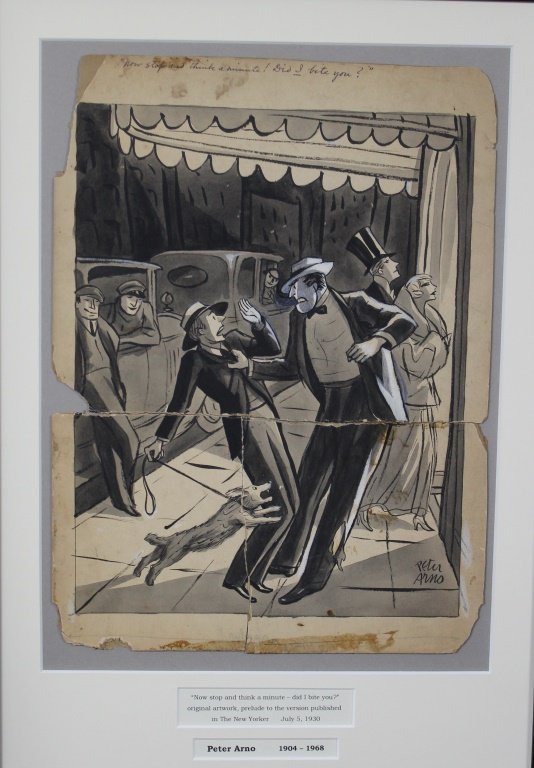 |
| "Now stop and think a minute—did I bite you?" Peter Arno Preliminary art The New Yorker, July 5, 1930 |
It's all right, but Arno certainly wasn't satisfied with it. For his final version of the gag, he lowers the vantage point to the ground and gives us a more dramatic view, the view of spectators looking up at a prize fight. Now we are down at the eye level of the attacking dog. We are so low we can look up into the inside of the awning above. In the rough version, the top hat of the man entering the lobby rises over the other figures, but in the published version it is merely at shoulder level and thereby less significant. Furthermore, Arno draws as if through a wide angle lens here; one wonders whether his camera aided him in such adept compositional transformations. From here, it is just a matter of adding some dramatic lighting and of rendering the belligerent man more solidly from behind and in a more threatening, angular pose.
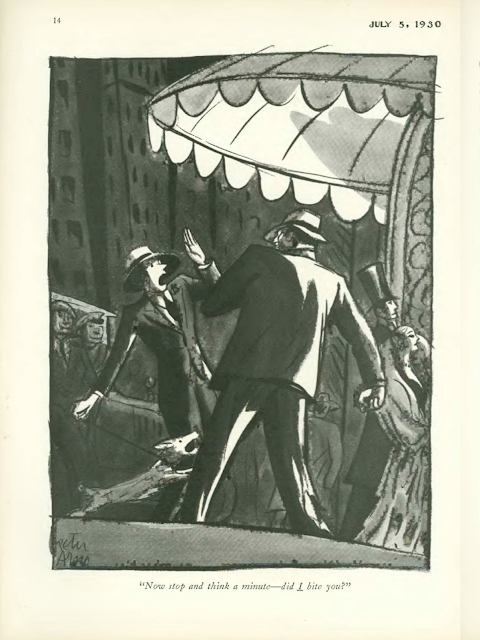 |
| "Now stop and think a minute—did I bite you?" Peter Arno The New Yorker, July 5, 1930, page 14 |
Here's one more example, a different kind of "turnaround." In the preliminary version of his cartoon, Arno's reluctant scoutmaster is too awkward by half.
 |
"You're making a great mistake, Miss Loesch. We scoutmasters are not entrusted with military secrets." Peter Arno Preliminary art The New Yorker, July 27, 1940, page 18 |
The final image "reads" better from left to right. The scoutmaster's legs are now at least both doing the same thing; he is still awkward, but less so, as he fails to take advantage of his opportunity. Perhaps the scoutmaster wasn't prepared.
 |
"You're making a grave mistake, Miss Loesch. We scoutmasters are not entrusted with military secrets." Peter Arno The New Yorker, July 27, 1940, page 18 |
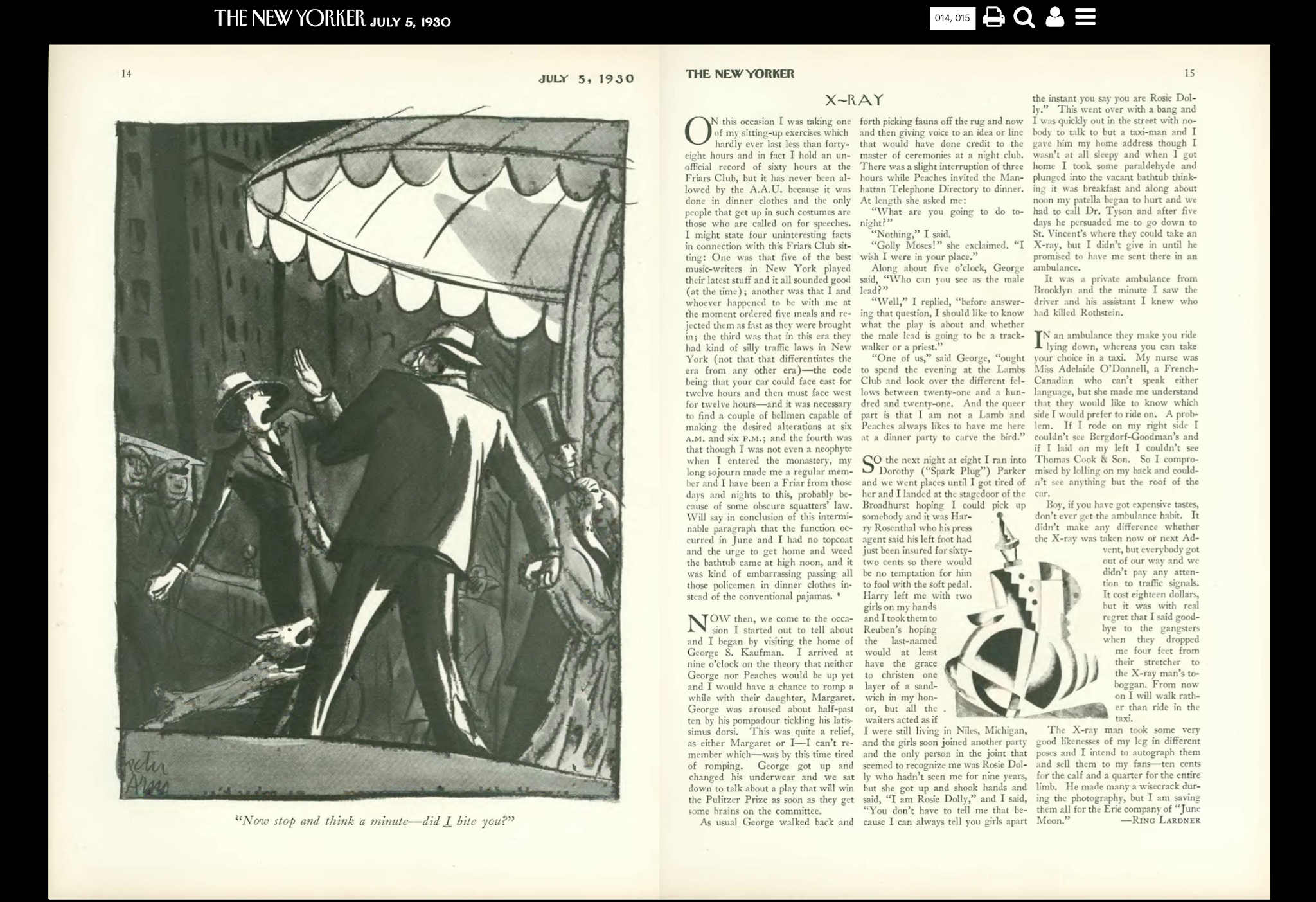 |
| Cartoon by Peter Arno and a spot drawing by an unknown artist |
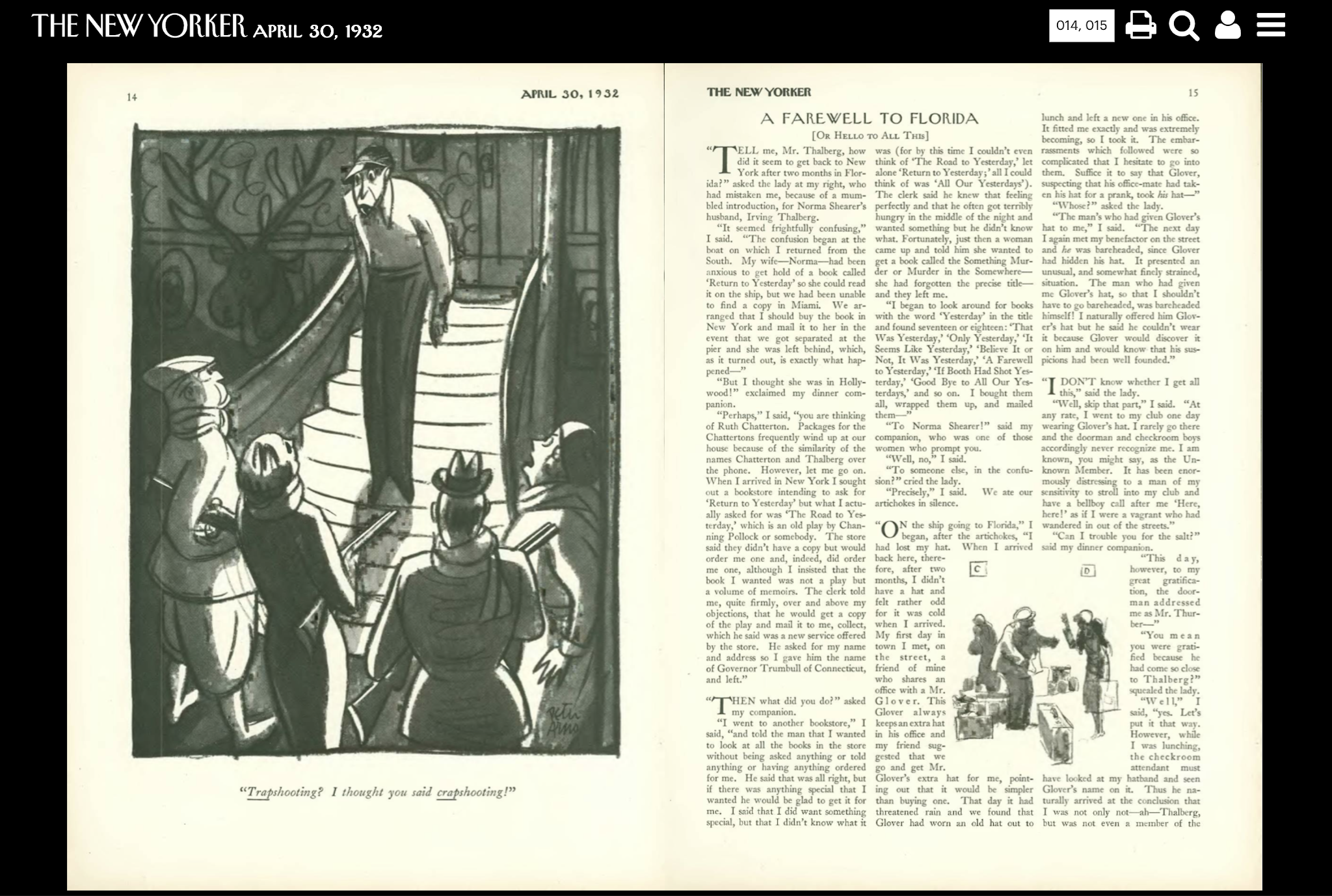 |
| Cartoon by Peter Arno and a spot drawing, apparently by Helen E. Hokinson |
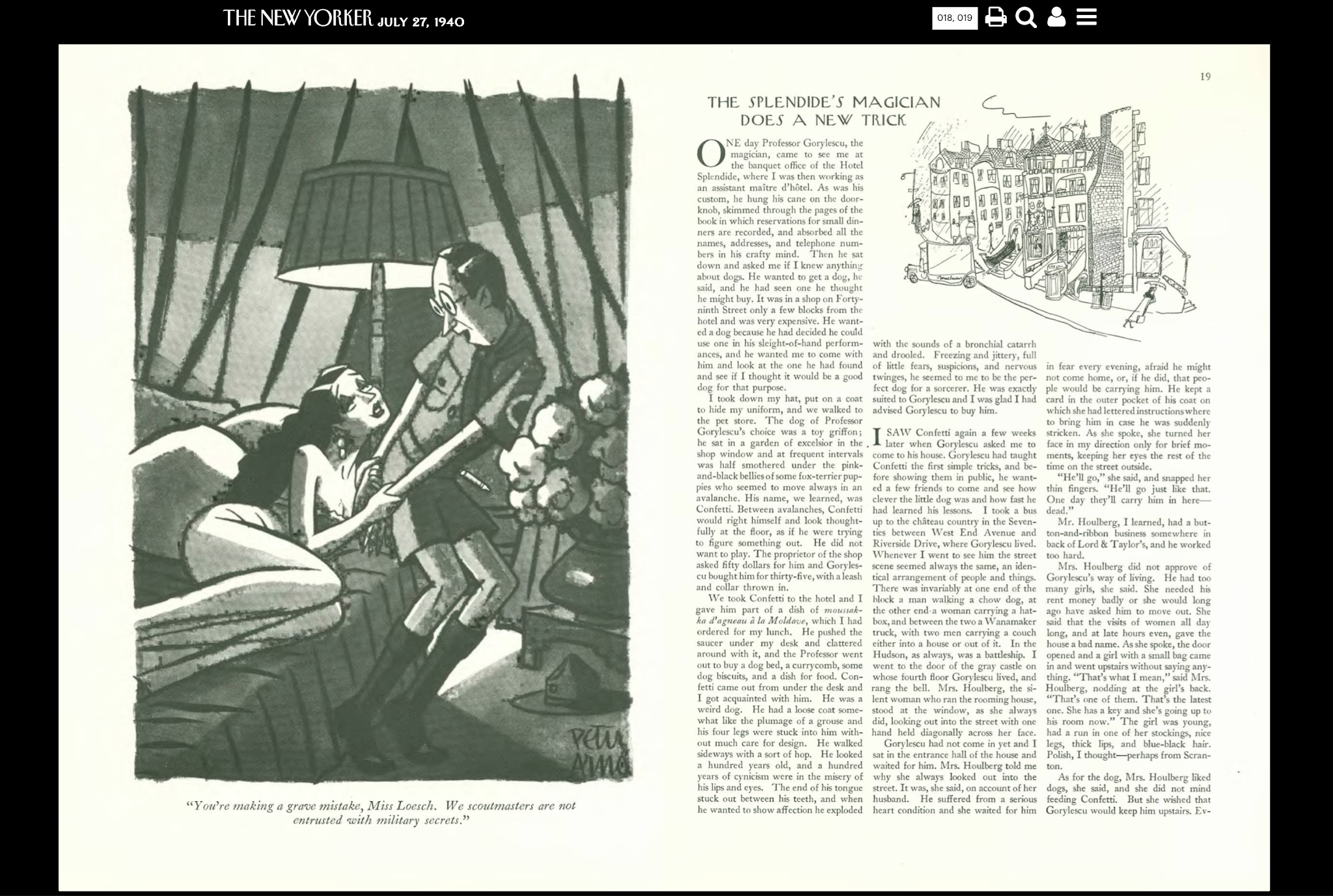 |
| Cartoon by Peter Arno and an illustration by Ludwig Bemelmans |
Note: There are doubtless many cartoonists who are capable of changing point of view on the journey between rough and finish, but I haven't found too many who handle it as fluidly as Peter Arno. Readers with further examples of changing perspectives by Arno or indeed by other New Yorker cartoonists are encouraged to submit them here.
I am grateful to A New Yorker State of Mind for giving Arno's would-be trapshooters such a high profile here.
I am grateful as well to Michael Maslin, the author of Peter Arno: The Mad, Mad World of The New Yorker's Greatest Cartoonist. Numerous copies are available online, so don't ask to borrow mine. And if you aren't reading his blog Ink Spill, then you just can't know everything going on in the world of New Yorker cartoonists.
My post about Frank Modell's original Arno art may be seen here. For what it's worth, I consider it my best effort.
This blog's original scoutmaster post may be found here. For pity's sake, don't let this happen to you.
The Attempted Bloggery Centennial Posts 💯
Blog Post No. 100
Blog Post No. 200: A Shaggy Dog Story
Blog Post No. 2900: My Copies of The Ultimate Cartoon Book of Book Cartoons
Blog Post No. 3000: The Vatican Museums 2019
Blog Post No. 3100: Frank Beaven's Dickensian Christmas
Blog Post No. 3200: St. Patrick's Day 1938—Will Cotton Original New Yorker Cover Art
Blog Post No. 3300: "GIve Up?" by Whitney Darrow, Jr.
Blog Post No. 3400: The 1942 Navy Relief Show Program
Blog Post No. 3500: William Steig's "What is Art?"
Blog Post No. 3000: The Vatican Museums 2019
Blog Post No. 3100: Frank Beaven's Dickensian Christmas
Blog Post No. 3200: St. Patrick's Day 1938—Will Cotton Original New Yorker Cover Art
Blog Post No. 3300: "GIve Up?" by Whitney Darrow, Jr.
Blog Post No. 3400: The 1942 Navy Relief Show Program
Blog Post No. 3500: William Steig's "What is Art?"
 |
| Artist unknown |
 |
| Ludwig Bemelmans |
03700
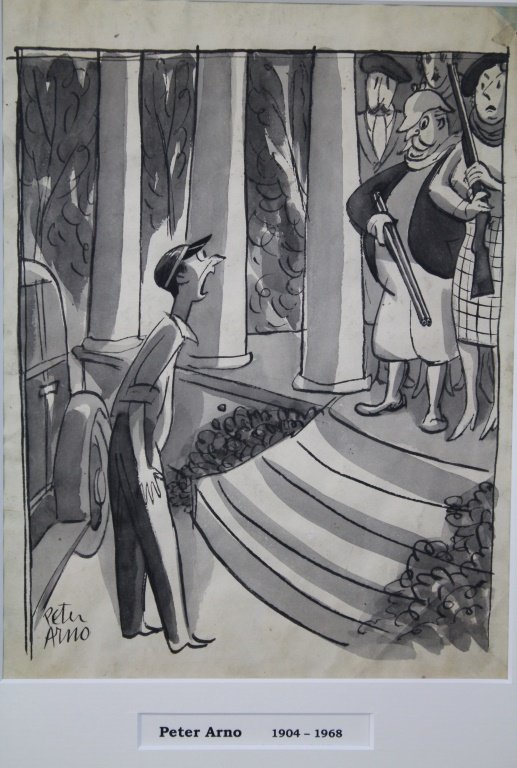

No comments:
Post a Comment